Issue with PyVista filling opening that shouldn't be filled
import math
import numpy as np
import matplotlib as mpl
import pyvista as pv
mpl.use("Qt5Agg")
mpl.rcParams["toolbar"] = "None" # Get rid of toolbar
def xy_waveguide_contour(throat, x_waveguide, ellipse_x):
x_initial = (throat + (x_waveguide * (ellipse_x - throat))) / 2
return x_initial
def xy_waveguide_contour_x2(throat, x_waveguide, ellipse_x):
x_initial = (throat + (x_waveguide * (ellipse_x - throat)))
return x_initial
def z_waveguide_contour(x_array, depth_factor, angle_factor, throat):
angle_factor = angle_factor / 10000
x_prime = x_array - (throat / 2)
z = (x_prime / angle_factor) ** (1 / depth_factor)
return z
def ellipse_contour(a, b):
a = a / 2
b = b / 2
ellipse_steps = np.linspace(0, 0.5 * math.pi, 100)
x_ellipse_array = np.array([])
y_ellipse_array = np.array([])
for h in range(100):
x_ellipse_array = np.append(x_ellipse_array, a * np.cos(ellipse_steps[h]))
y_ellipse_array = np.append(y_ellipse_array, b * np.sin(ellipse_steps[h]))
return x_ellipse_array, y_ellipse_array
def circle_contour(throat):
throat = (throat / 2)
circle_steps = np.linspace(0, 0.5 * math.pi, 100)
x_circle_array = np.array([])
y_circle_array = np.array([])
for j in range(100):
x_circle_array = np.append(x_circle_array, throat * np.cos(circle_steps[j]))
y_circle_array = np.append(y_circle_array, throat * np.sin(circle_steps[j]))
return x_circle_array, y_circle_array
waveguide_throat = 30
ellipse_x = 250
ellipse_y = 150
depth_fact = 4
angle_fact = 40
# Total steps = 100
array_length = 100
xy_steps = np.linspace(0, 1, array_length)
# initialize x, y, z, and zero array
x_array = np.array([])
y_array = np.array([])
z_array = np.array([])
xsub_array = np.array([])
ysub_array = np.array([])
zero_array = np.zeros([array_length])
# calculate hor(x), ver(y), and height(z) contour data and add into array
for i in range(array_length):
x_array = np.append(x_array, xy_waveguide_contour(waveguide_throat, xy_steps[i], ellipse_x))
y_array = np.append(y_array, xy_waveguide_contour(waveguide_throat, xy_steps[i], ellipse_y))
z_array = np.append(z_array, z_waveguide_contour(x_array[i], depth_fact, angle_fact, waveguide_throat))
# calculate data for ellipse
x_ellipse_data, y_ellipse_data = ellipse_contour(ellipse_x, ellipse_y)
# grab last point from z_array and make entire array same value to define height of ellipse/waveguide
ellipse_height = z_array[array_length - 1]
ellipse_z = np.full(shape=array_length, fill_value=ellipse_height)
# Calculate data for throat
circle_x, circle_y = circle_contour(waveguide_throat)
for j in range(0, array_length, 20):
for i in range(array_length):
xsub_array = np.append(xsub_array, xy_waveguide_contour_x2(circle_x[j], xy_steps[i], x_ellipse_data[j]))
ysub_array = np.append(ysub_array, xy_waveguide_contour_x2(circle_y[j], xy_steps[i], y_ellipse_data[j]))
# X = np.concatenate((circle_x, x_ellipse_data, x_array, zero_array))
# Y = np.concatenate((circle_y, y_ellipse_data, zero_array, y_array))
# Z = np.concatenate((zero_array, ellipse_z, z_array, z_array))
# Reshape arrays into 1 column, multiple rows
x_array = x_array.reshape(-1, 1)
y_array = y_array.reshape(-1, 1)
z_array = z_array.reshape(-1, 1)
ellipse_z = ellipse_z.reshape(-1, 1)
x_ellipse_data = x_ellipse_data.reshape(-1, 1)
y_ellipse_data = y_ellipse_data.reshape(-1, 1)
circle_x = circle_x.reshape(-1, 1)
circle_y = circle_y.reshape(-1, 1)
zero_array = zero_array.reshape(-1, 1)
xsub_array = xsub_array.reshape(-1, 1)
ysub_array = ysub_array.reshape(-1, 1)
# save arrays to text
X = np.concatenate((circle_x, x_ellipse_data, x_array, zero_array, xsub_array), axis=0)
Y = np.concatenate((circle_y, y_ellipse_data, zero_array, y_array, ysub_array), axis=0)
Z = np.concatenate((zero_array, ellipse_z, z_array, z_array, z_array, z_array, z_array, z_array, z_array), axis=0)
xyz = np.concatenate((X, Y, Z), axis=1)
cloud = pv.PolyData(xyz)
surf = cloud.delaunay_2d()
surf.plot()
I am trying to create a 3D surface using pyvista (Have also tried Mayavi), whenever I perform a delaunay_2D mesh to create the surface, it closes the "mouth" opening of this surface that should still be open. I have included an image showing what part needs to be fixed and also a copy of my code that generates the data and reproduces the current issue. I would really appreciate anyone's help regarding this issue.
